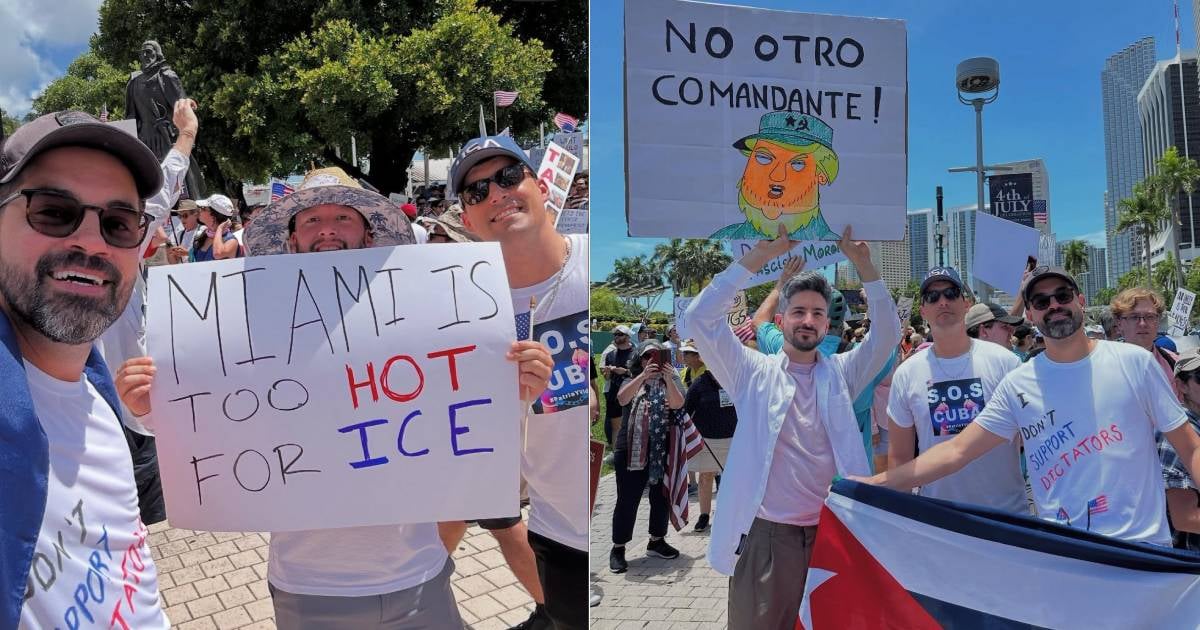A wave of Cuban protesters took to the streets of Miami on Saturday to voice their opposition to President Donald Trump. The demonstration was filled with fierce messages denouncing authoritarianism and expressing fear of experiencing repression in the U.S. similar to what they fled from in Cuba.
With signs reading “Not Another Commander,” “Miami is too hot for ICE,” and shirts emblazoned with “I didn’t escape a dictatorship to suffer another,” many of the demonstrators—comprised largely of exiles and recent migrants—voiced their concerns about threats to American democracy. Journalist Javier Díaz shared images of the event, depicting participants waving the Cuban flag and holding caricatures of Trump as a dictator. “They say they don’t want another dictator like in Cuba,” Díaz commented alongside his photos on Facebook.
Though the protest was largely peaceful, it was not without controversy. Rubiel Segura Oliva reported that Enrique Tarrio, the former leader of the extremist group Proud Boys, known for political violence in the U.S., appeared at the rally, intensifying tensions among attendees. “Miami is heating up,” Segura remarked, describing verbal clashes between Trump-supporting Cubans and those who view him as authoritarian. “Cubans who support Trump and those who want to avoid such a curse in their nation are clashing verbally,” he added.
This Miami gathering was part of a broader movement, with over 2,000 protests taking place across the United States, organized by groups such as Indivisible and Movimiento 50501. In Florida alone, protests occurred in 75 cities, including Coral Springs, West Palm Beach, Fort Lauderdale, Homestead, and Miami Beach.
The event proceeded peacefully under the watchful eye of authorities, despite warnings from Governor Ron DeSantis regarding the enforcement of law HB 1, which permits arrests without bail in the event of riots. Nevertheless, no significant incidents were reported at most protest locations.
Key Questions About the Miami Protests
What were the main messages of the Cuban protesters in Miami?
The Cuban protesters in Miami carried signs and wore shirts with messages opposing authoritarianism and expressing their concerns about threats to American democracy under Trump. They emphasized not wanting another dictator like those they escaped from in Cuba.
Who is Enrique Tarrio and why was his presence controversial?
Enrique Tarrio is the former leader of the extremist group Proud Boys, known for involvement in political violence in the U.S. His presence at the Miami protest was controversial as it heightened tensions among the demonstrators.
